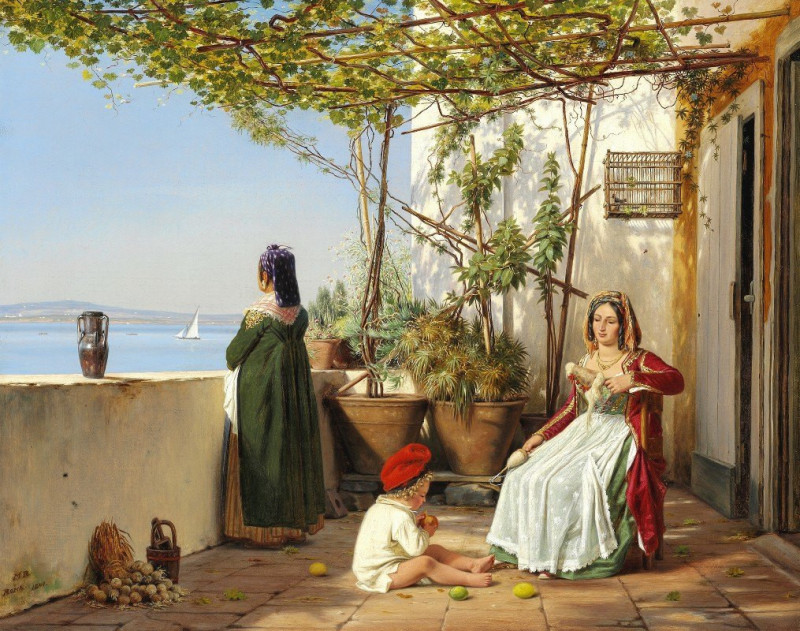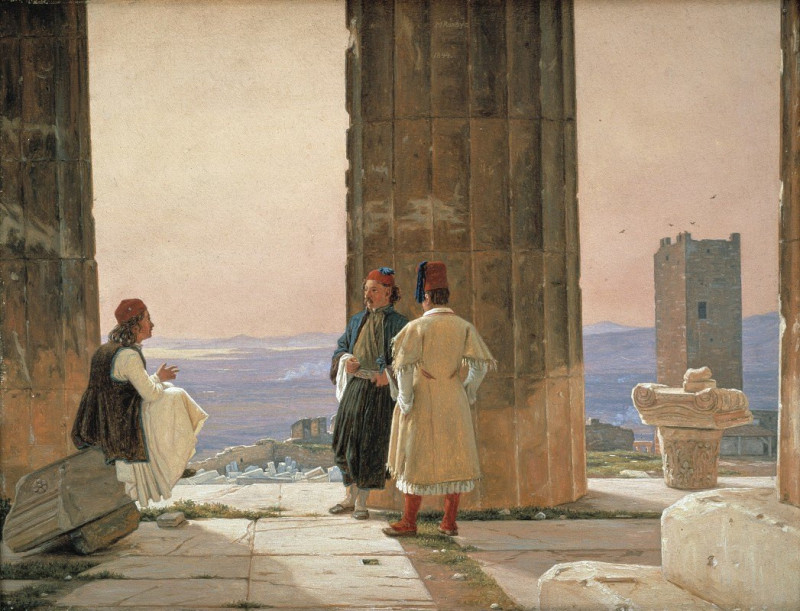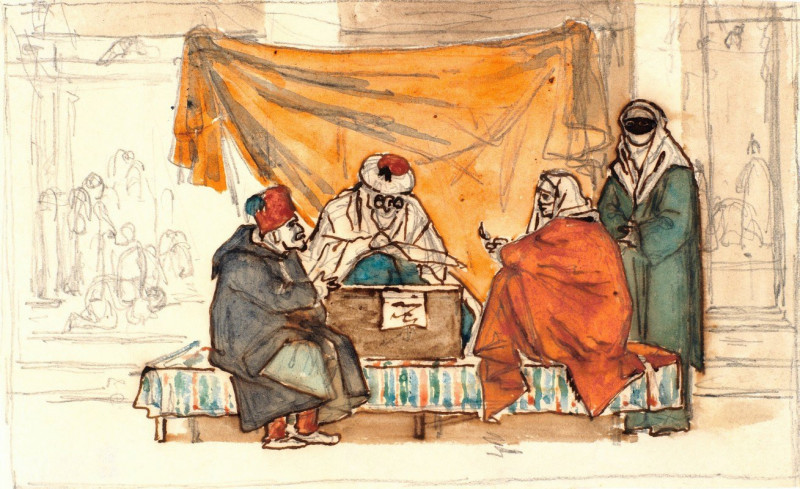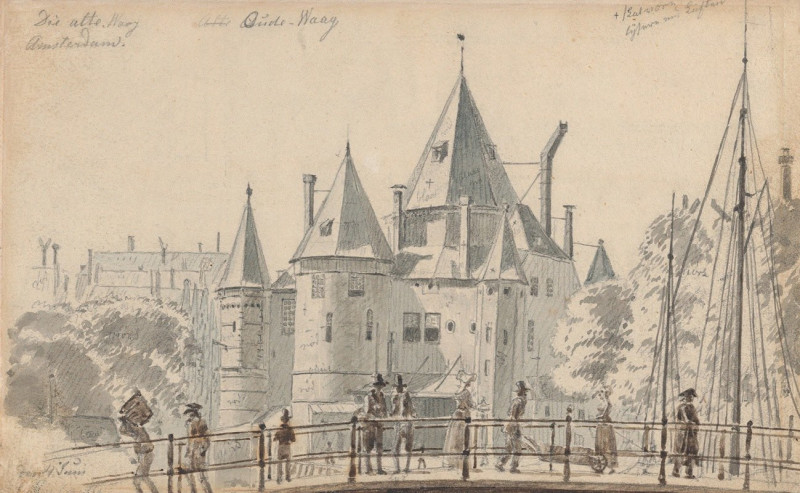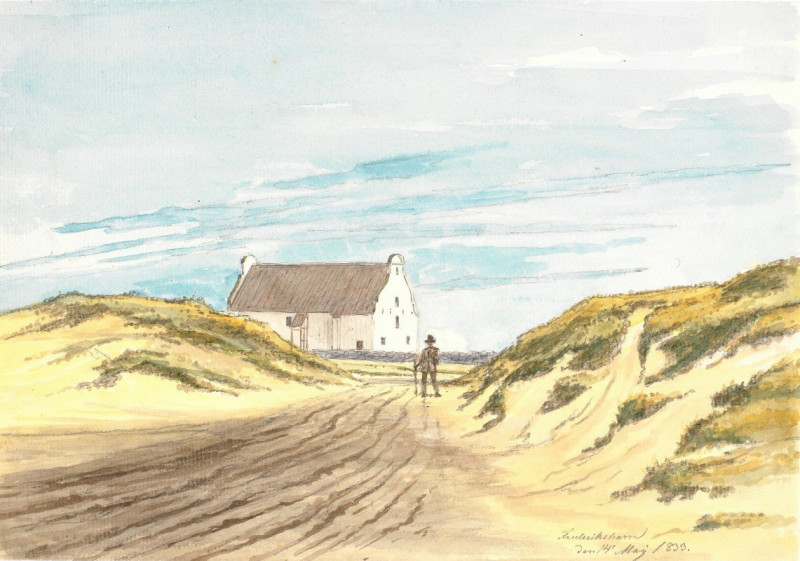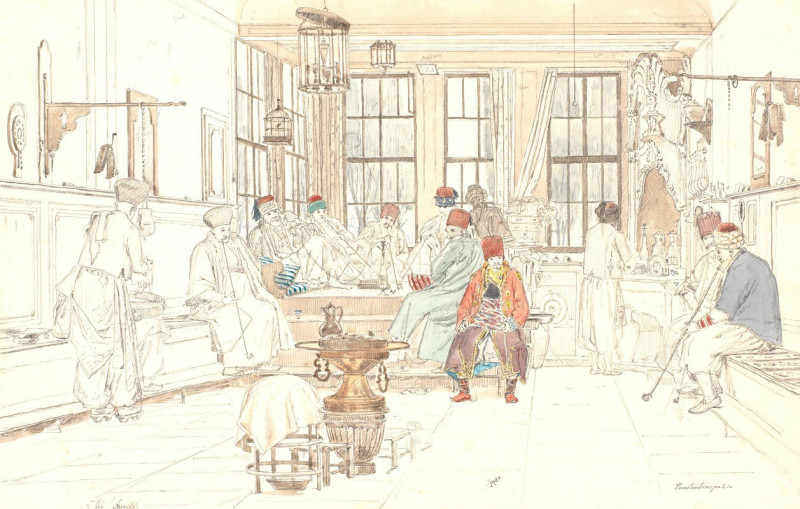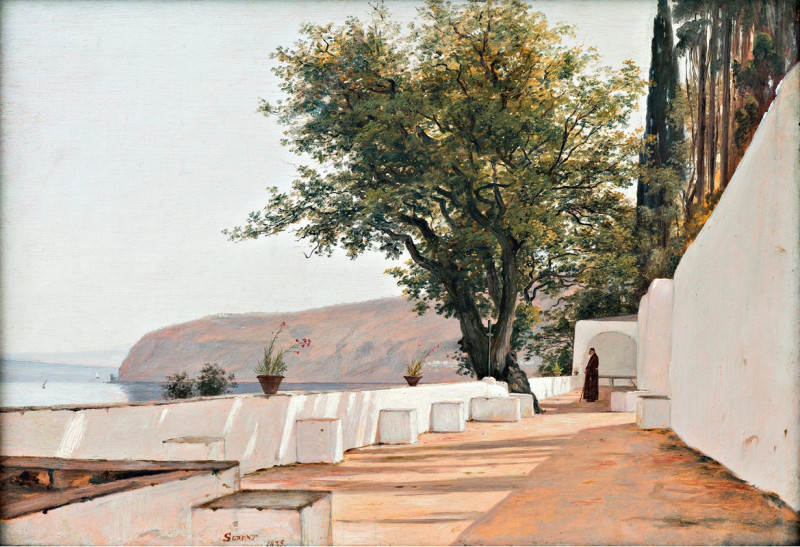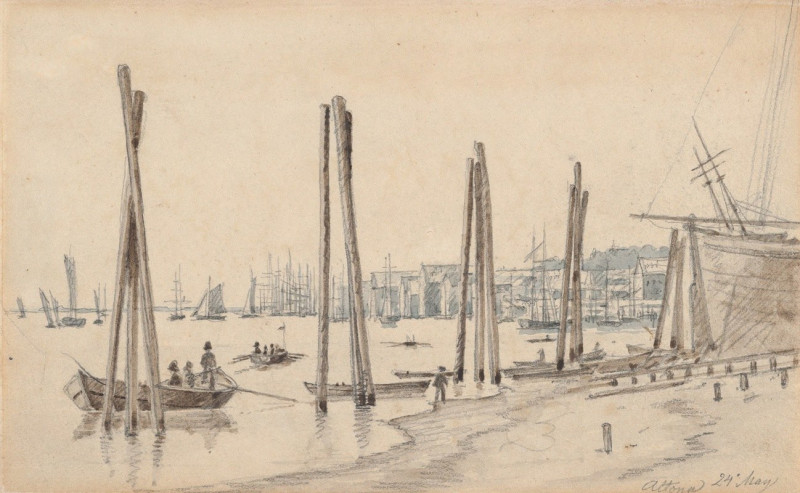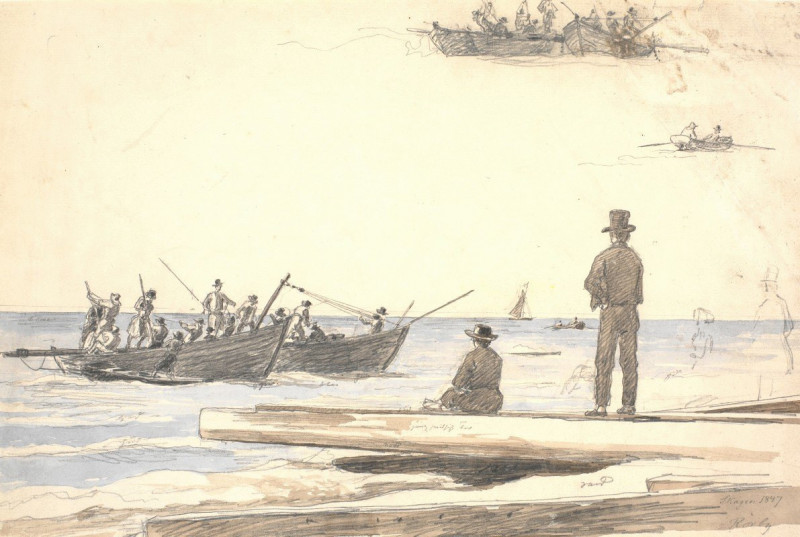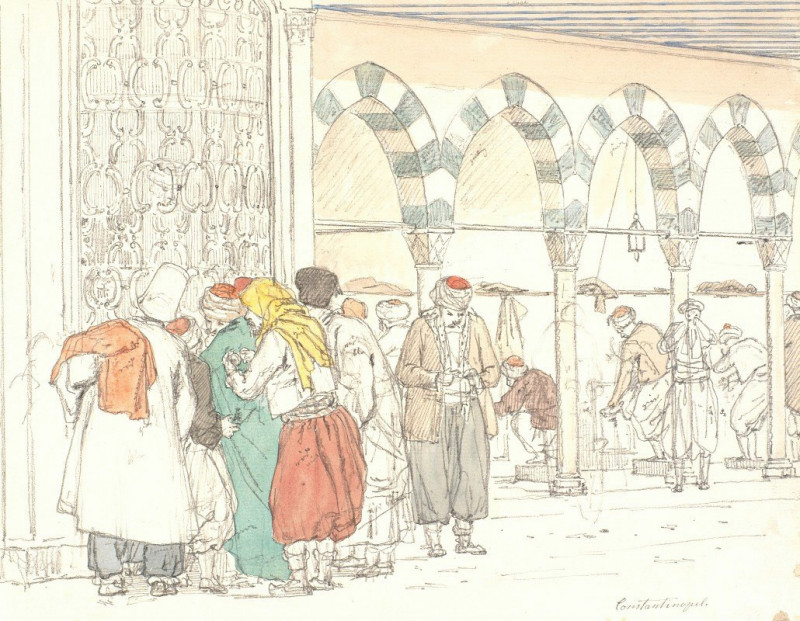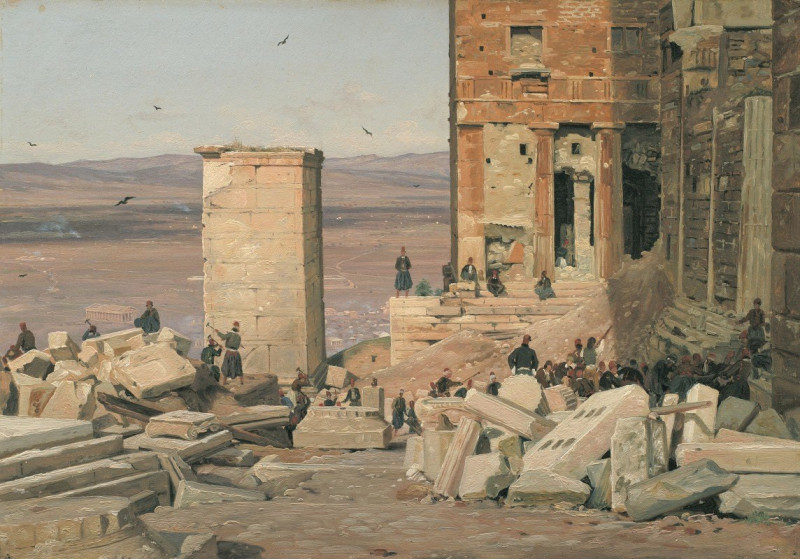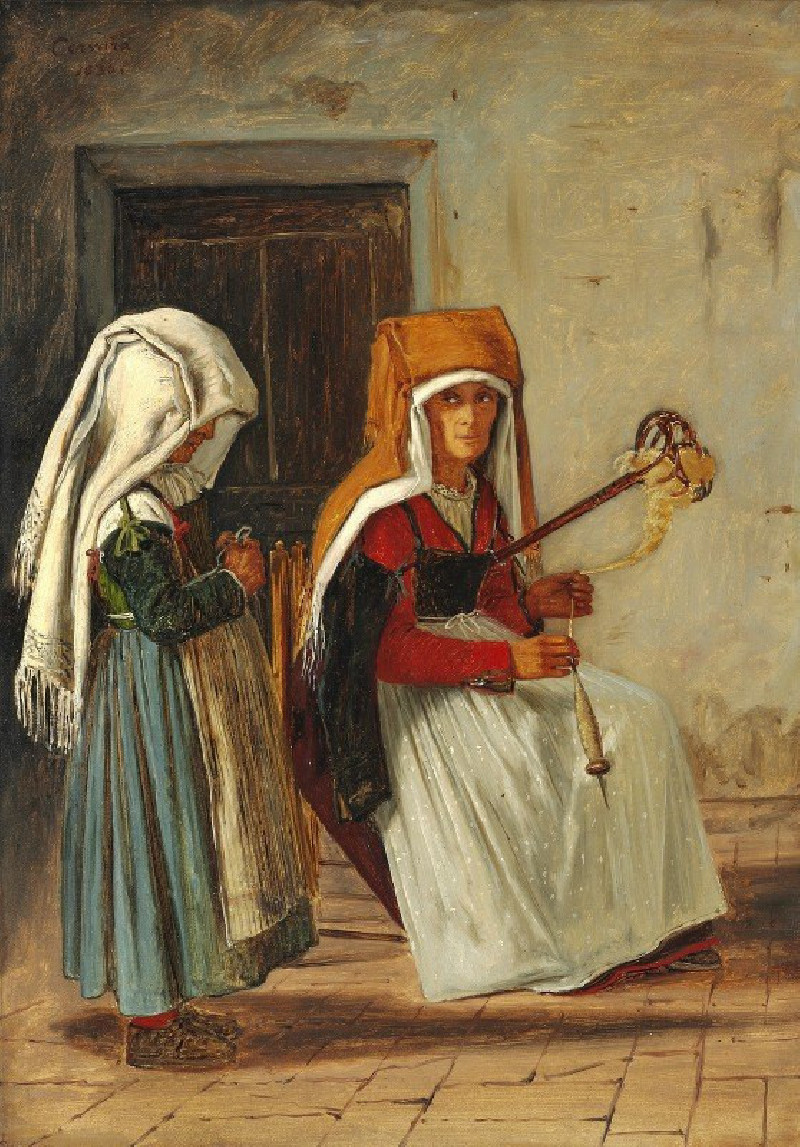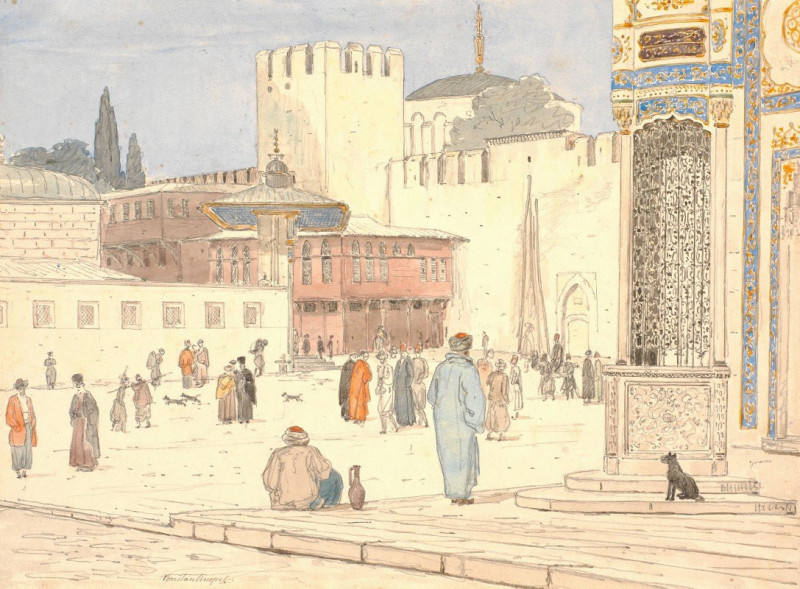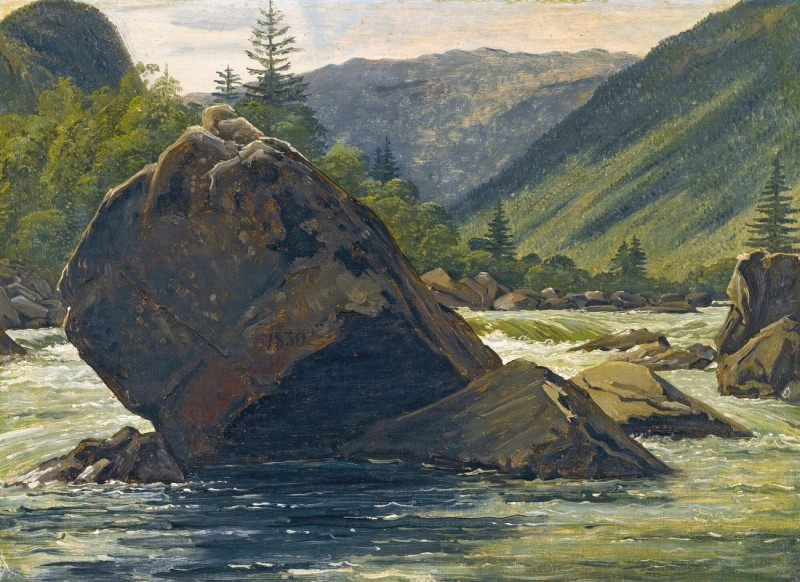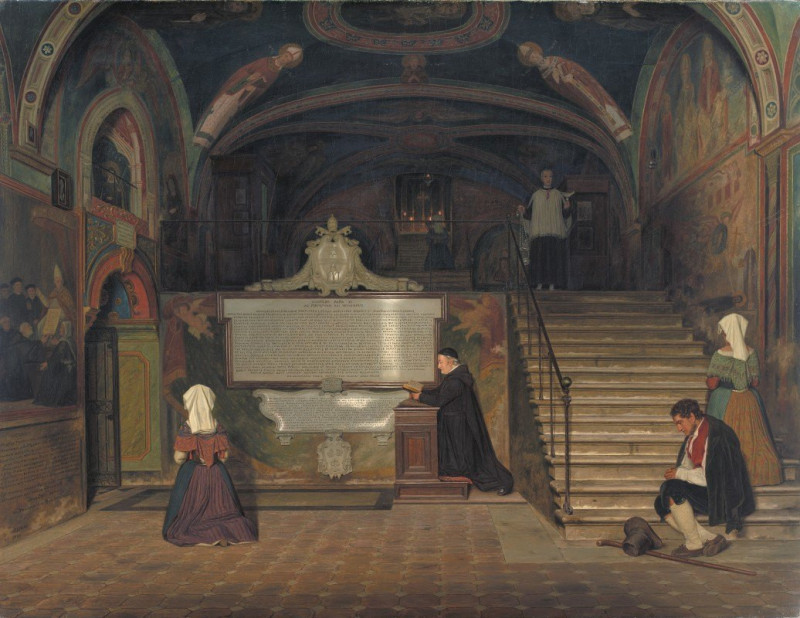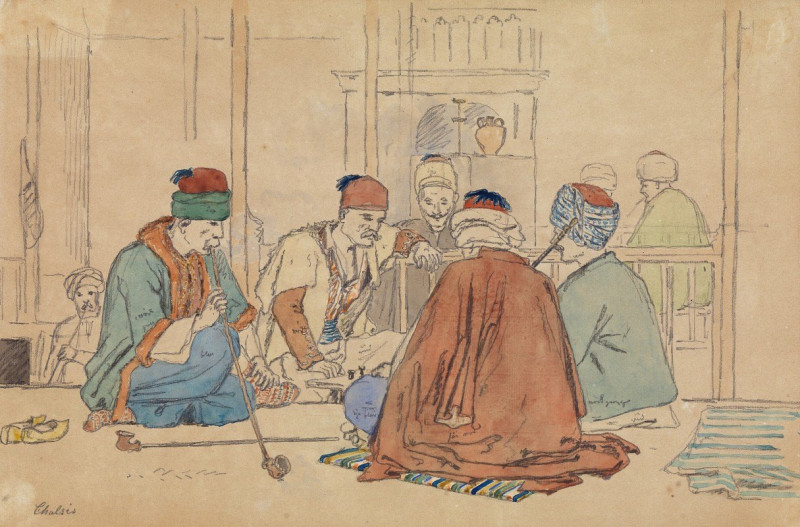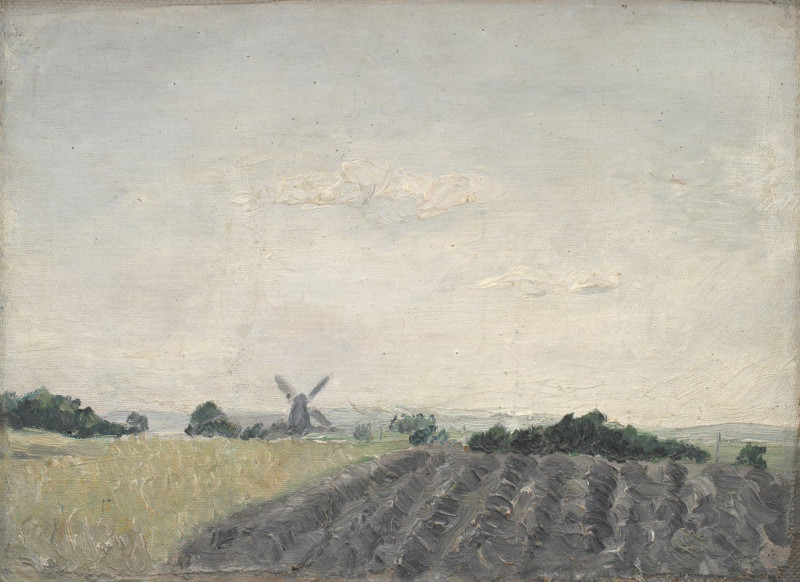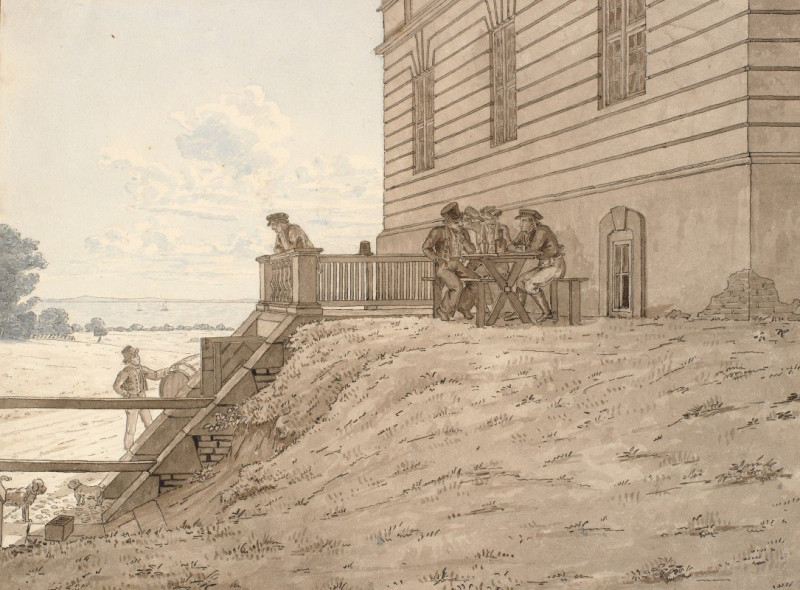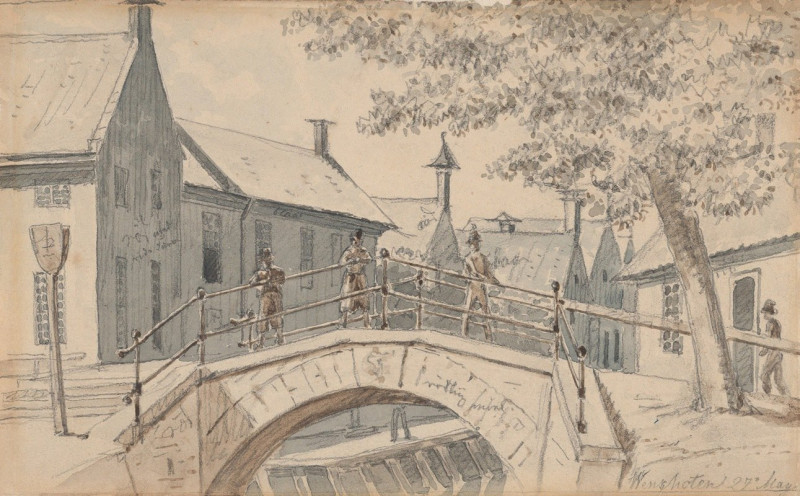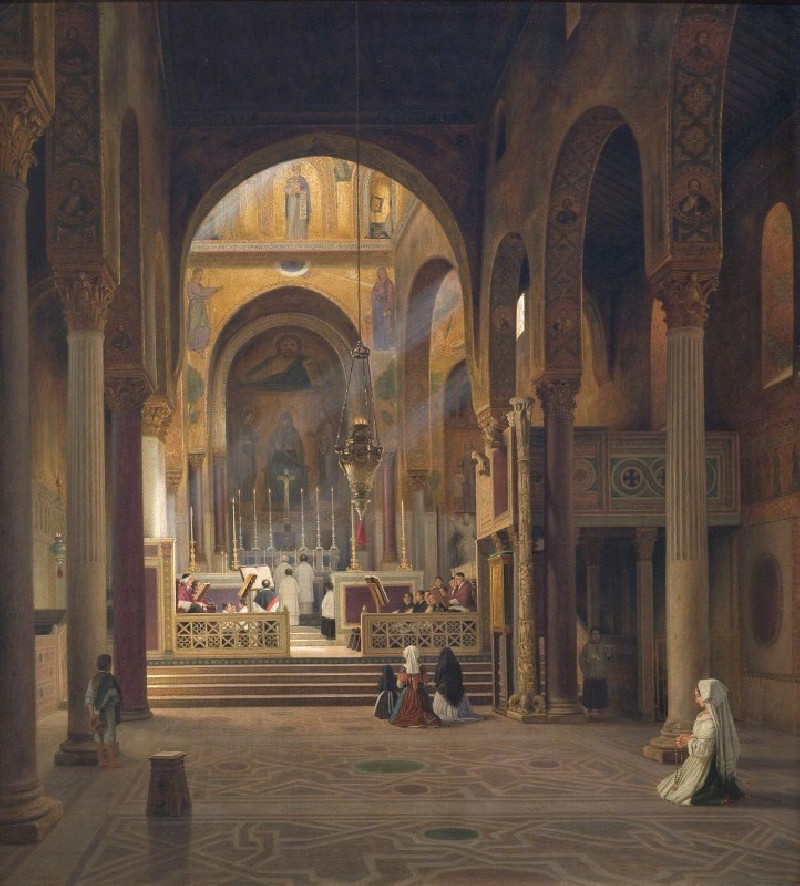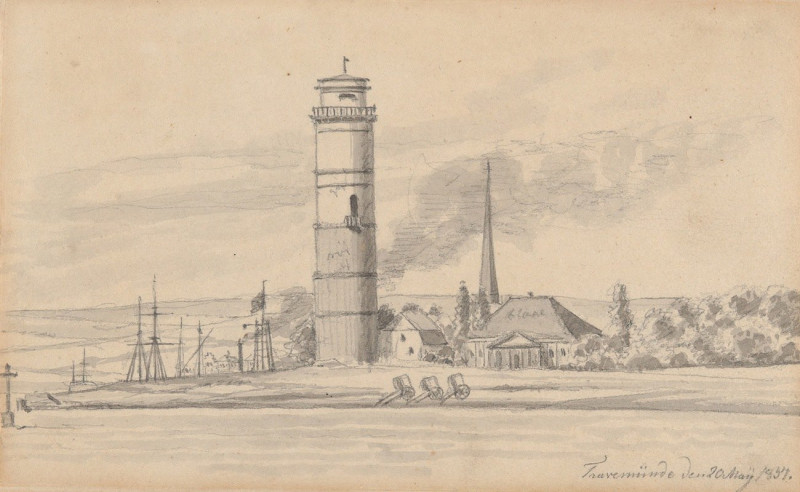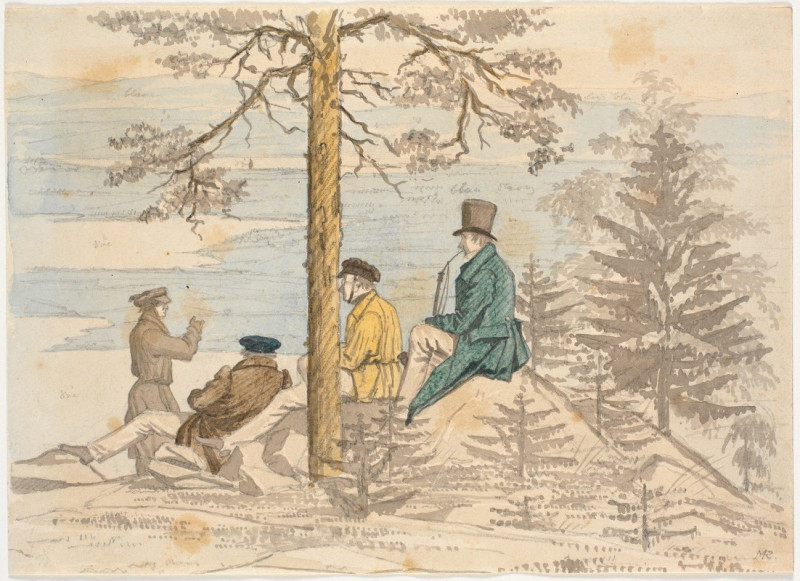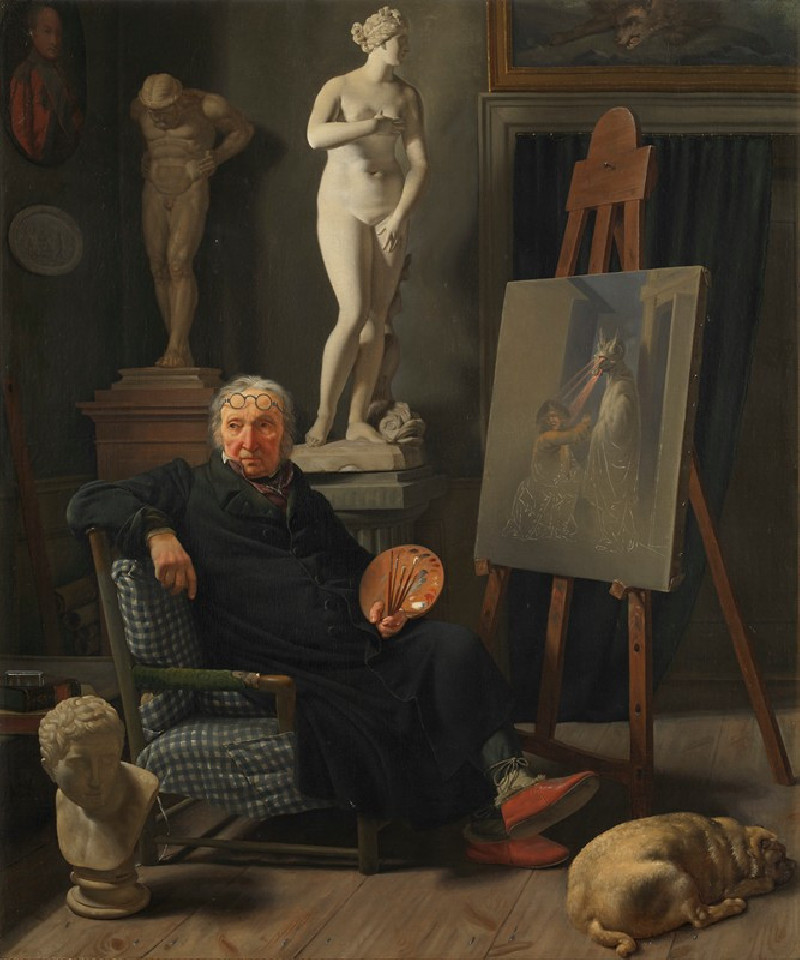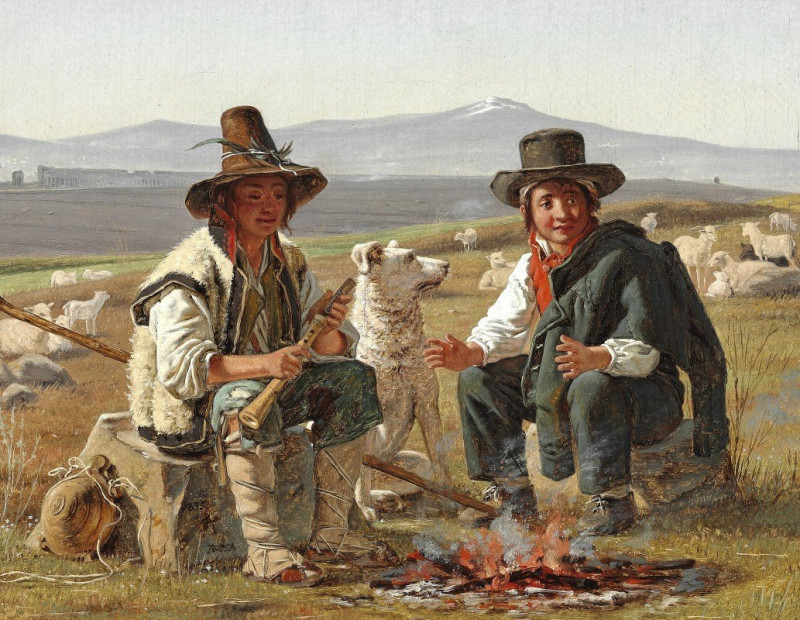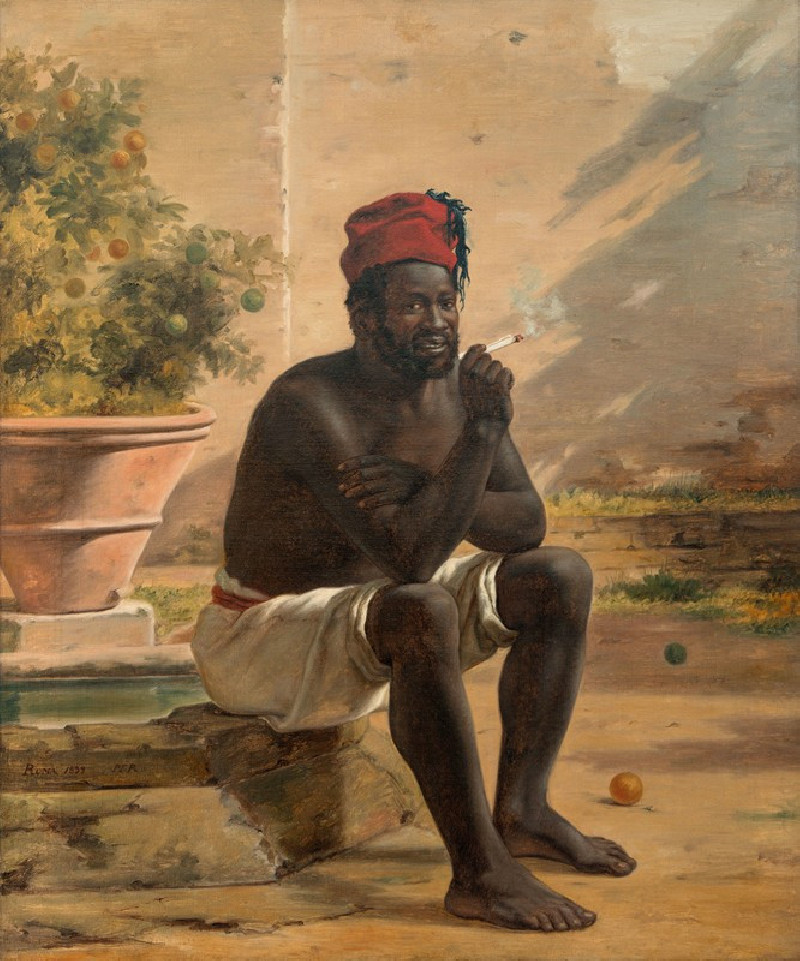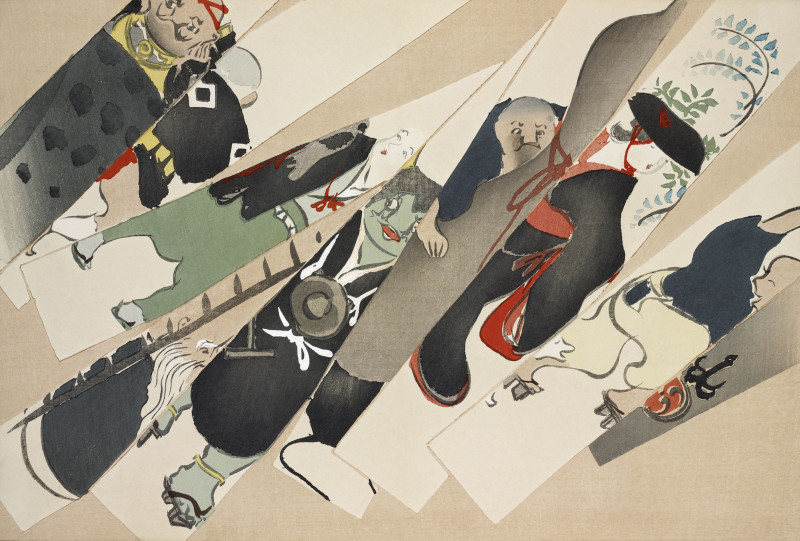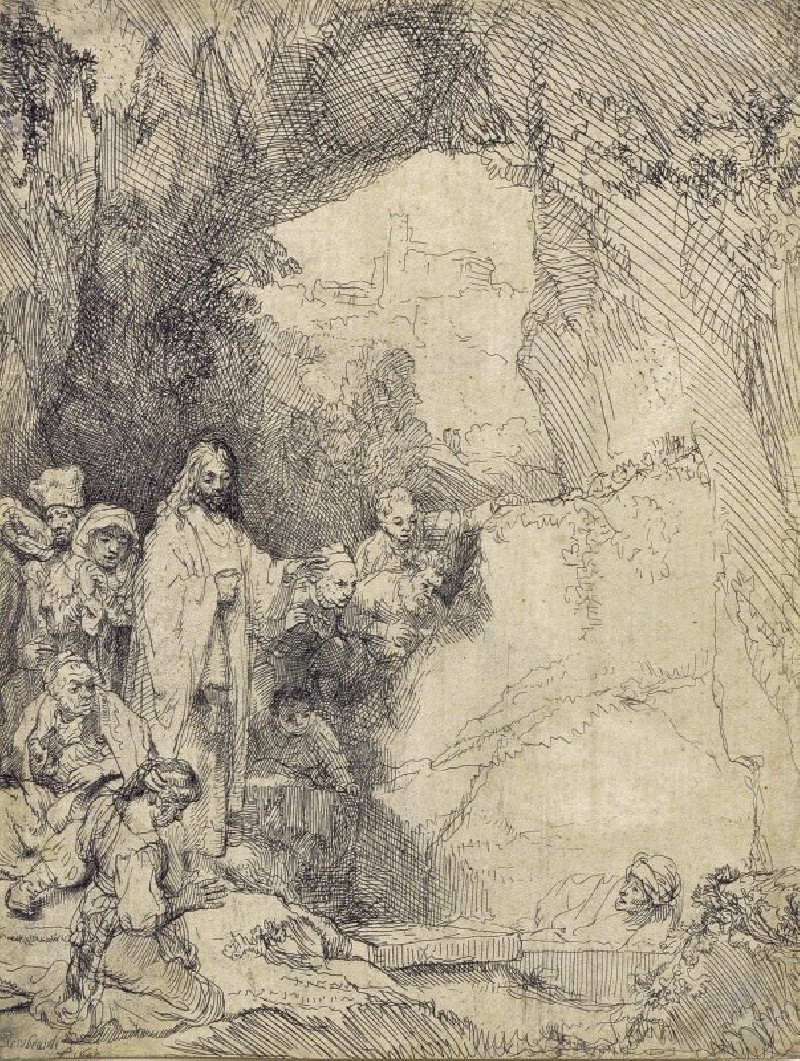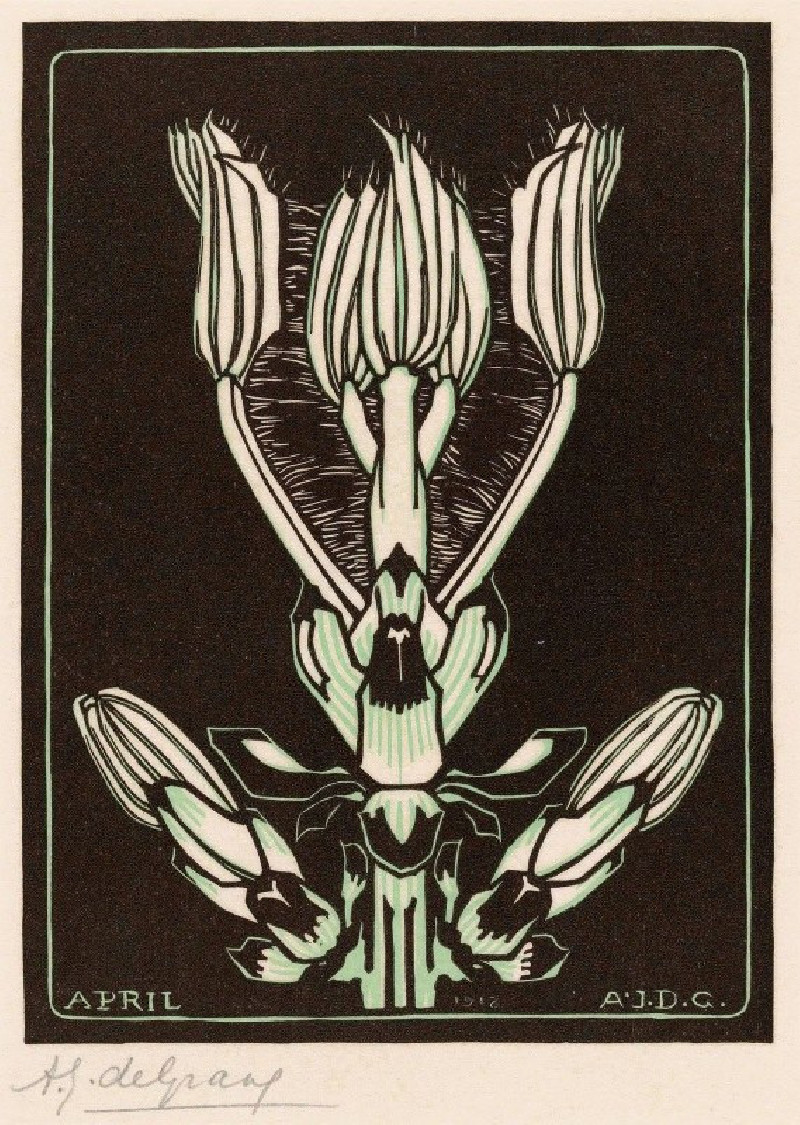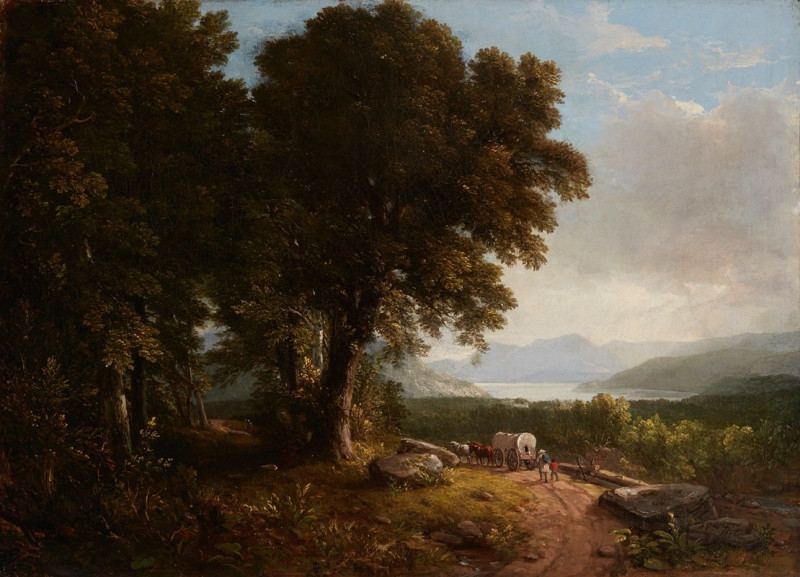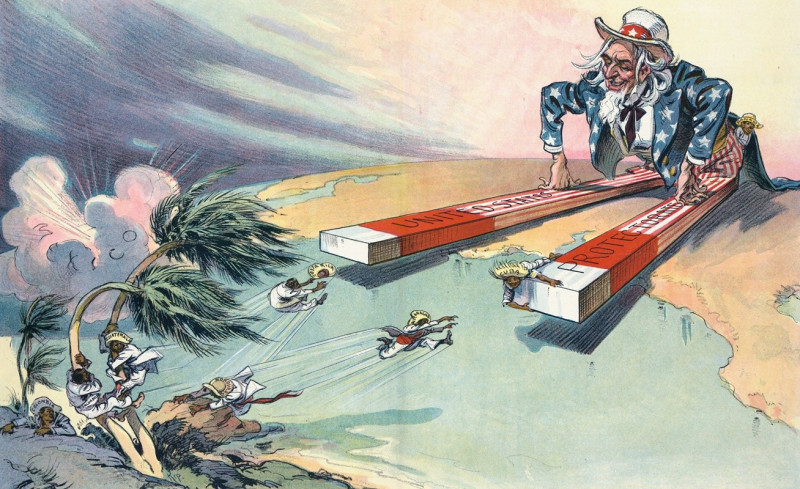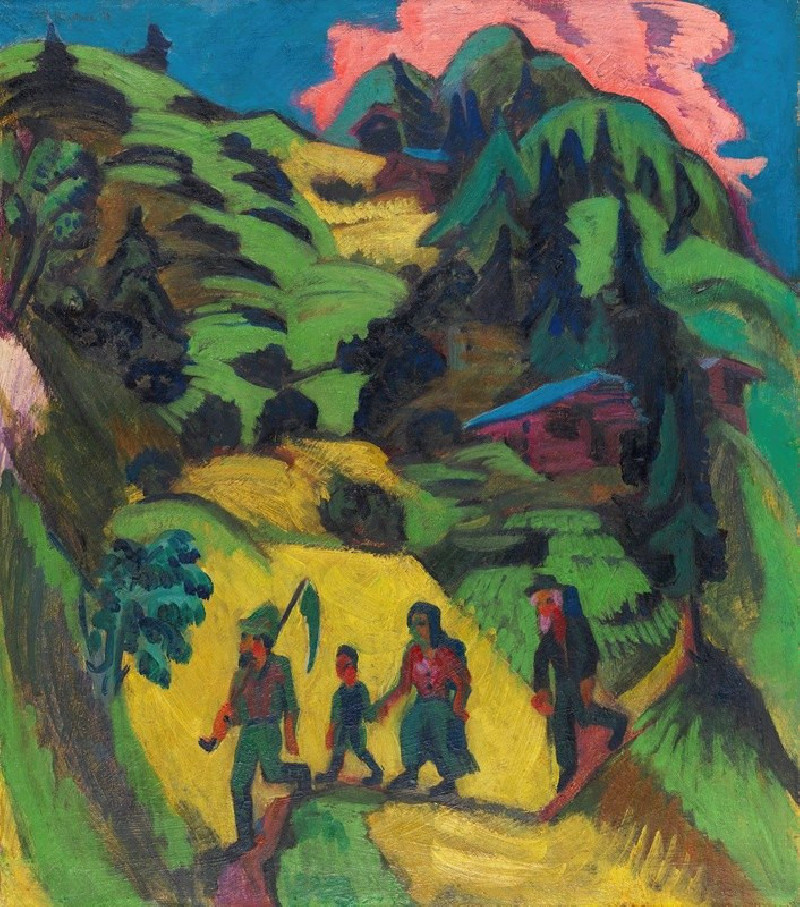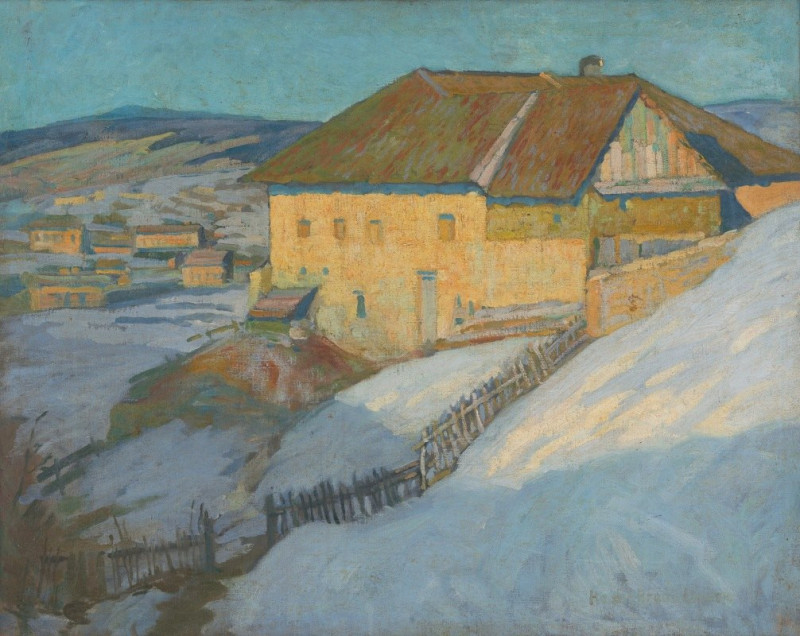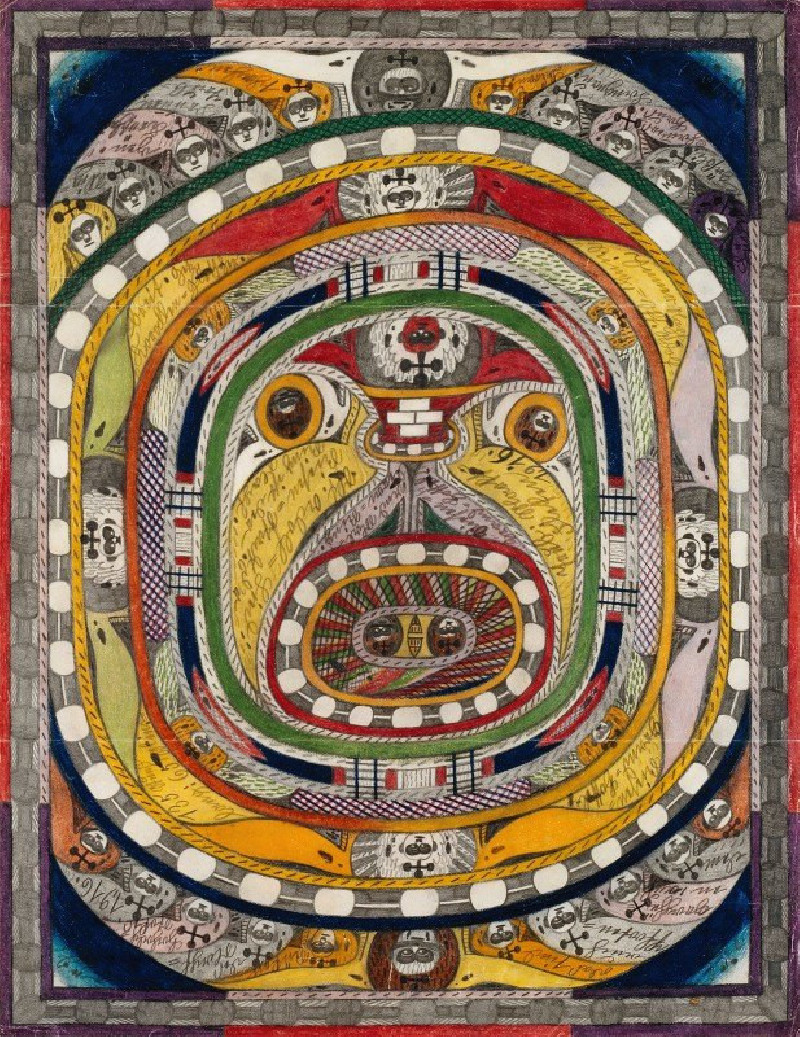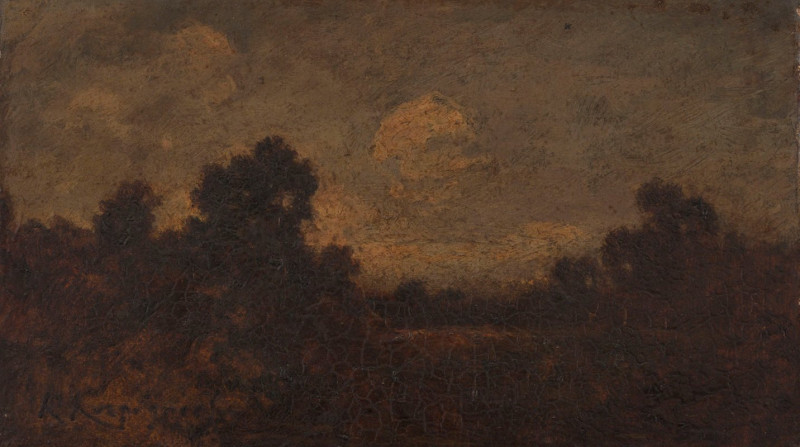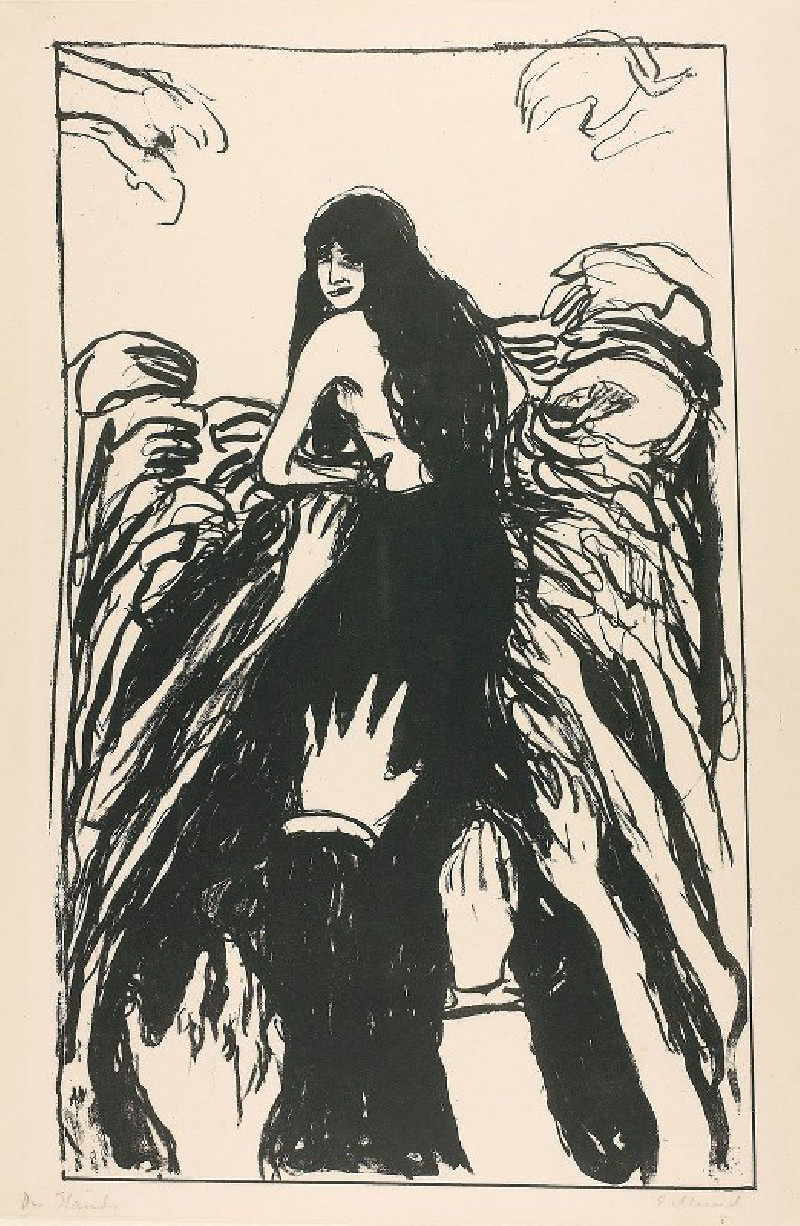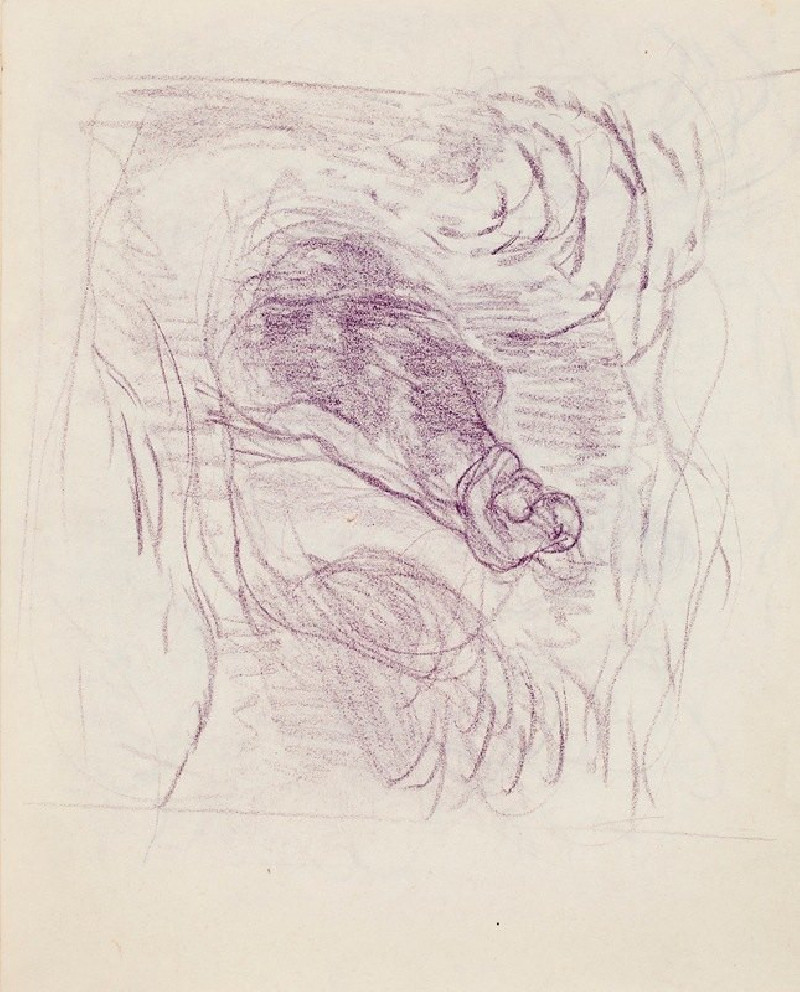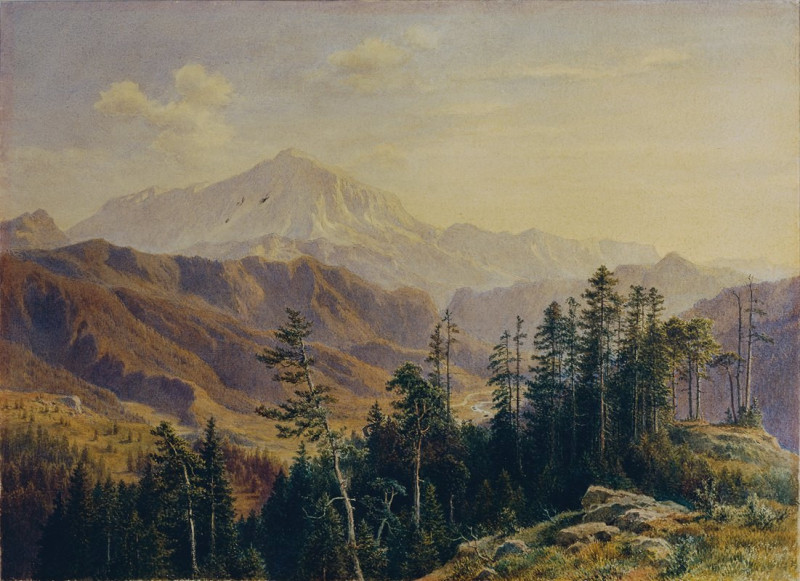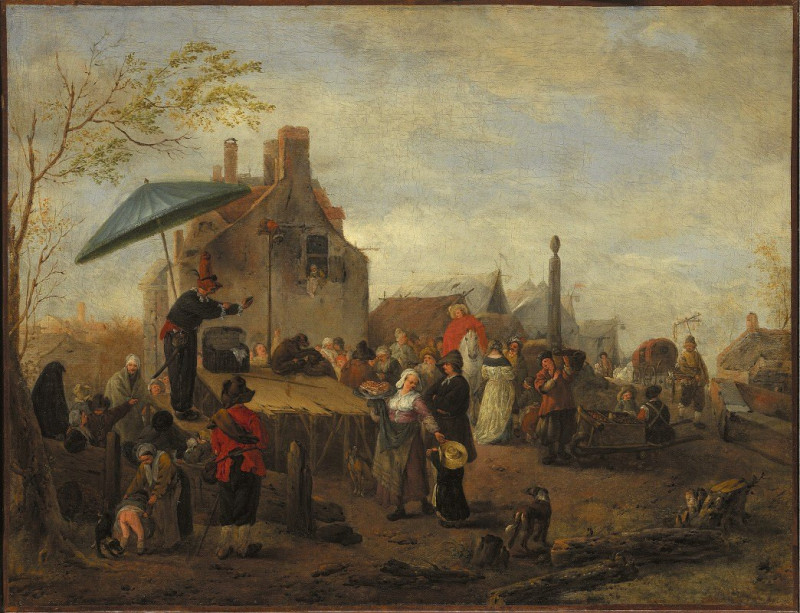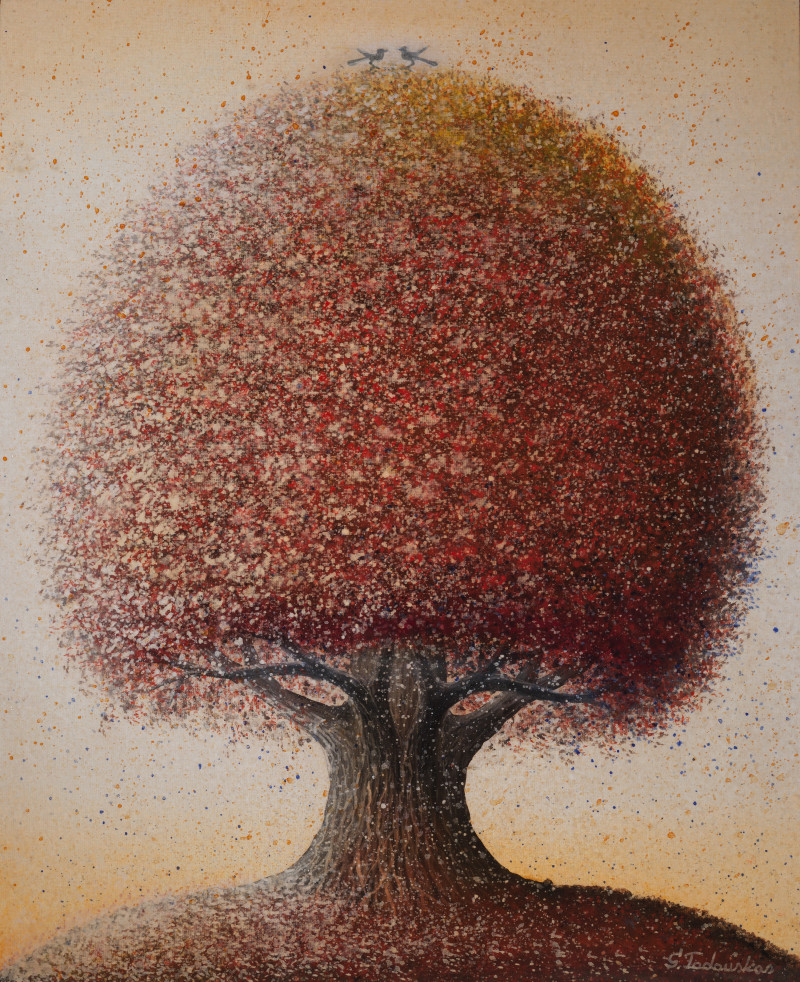Loggia fra Procida med figurer (1841)
Technique: Giclée quality print
Recommended by our customers
More about this artwork
Martinus Rørbye's remarkable painting, "Loggia fra Procida med figurer" (1841), transports viewers to a tranquil loggia facing the mesmerizing expanse of the sea. Painted with meticulous attention to detail and vibrant colors, this artwork encapsulates a serene moment on the island of Procida, off the coast of Naples.The painting portrays three figures—two women and a young boy—immersed in everyday activities under the dappled shade of a vine-covered pergola. On the left, a woman in traditional attire gazes thoughtfully at a distant sailboat, her back turned towards us, adding a layer of intrigue and mystery about her thoughts or emotions. In the center, another woman dressed in a vividly colored dress with intricate embroidery is actively engaged in knitting, her attention focused on her craft. To the right, a young boy in bright red headgear sits on the sunlit ground, completely absorbed in peeling fresh lemons, while a basket of harvested fruits lies nearby.Each element in the scene, from the lush potted plants to the casually hung birdcage, contributes to the atmosphere of peaceful domesticity and leisure that Rørbye masterfully creates. The open door to the right and the sunlit exterior hint at the warmth and beauty of the Mediterranean lifestyle.Rørbye's work not only captures an idyllic moment in time but also exudes a sense of deep calmness and contemplative solitude that resonates with viewers. The combination of fine details and a harmonious composition invites the audience to step into a world where time moves slowly, and the simple pleasures of life are savored.
Delivery
Returns
Martinus Christian Wesseltoft Rørbye was a Danish painter, known both for genre works and landscapes. He was a central figure of the Golden Age of Danish painting during the first half of the 19th century.
The most traveled of the Danish Golden Age painters, he traveled both north to Norway and Sweden and south to Italy, Greece and Constantinople. He was also the first Danish painter to take to painting in Skagen at the northern top of Jutland, almost half a century before the thriving community of Skagen Painters formed and came to fame, through Michael Ancher, Anna Ancher and P.S. Krøyer.

